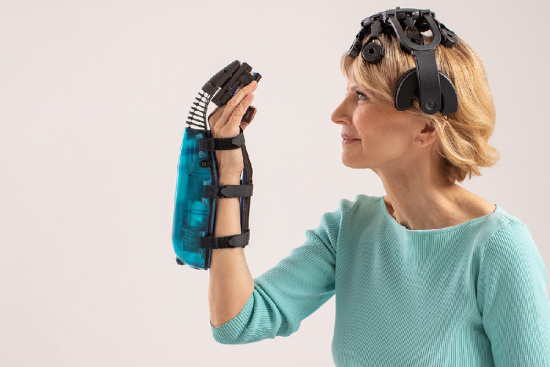A cerebrovascular accident (CVA),commonly known as a “stroke”, occurs when the blood supply to part of the brain is interrupted, depriving brain cells of the oxygen they need to function. This can lead to loss of motor, sensory, cognitive or language function.
Robotic rehabilitation is a therapeutic approach increasingly used to help stroke sufferers recover lost functions.
It involves using specially designed robots to assist and guide the patient's movements, providing intensive, personalized rehabilitation.







